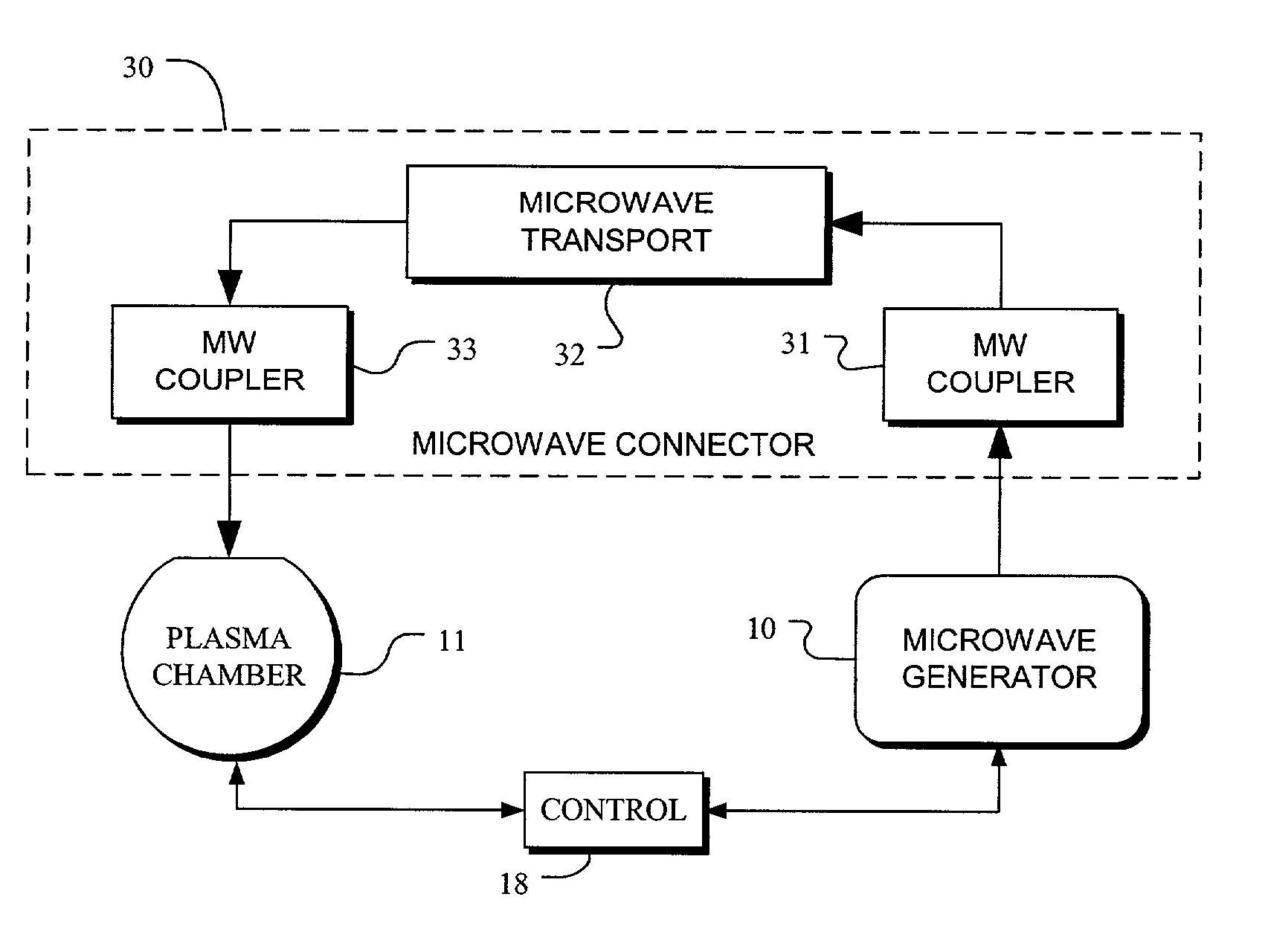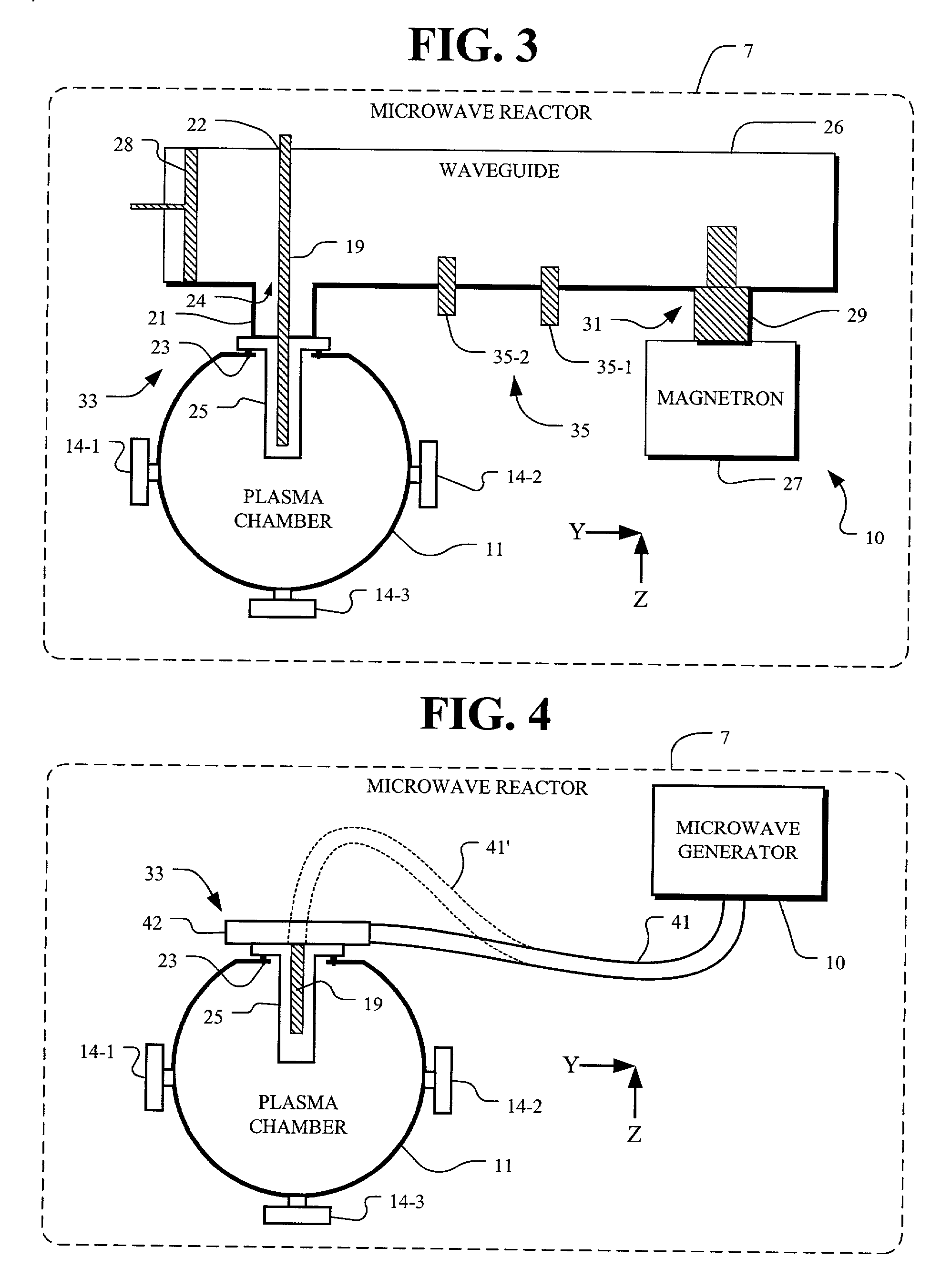Microwave gas decomposition reactor
a gas decomposition reactor and microwave technology, applied in the field of gas decomposition, can solve the problems of harmful emissions of hydrofluorocarbons (hfcs) by industrial processes, such as semiconductor processes, when released into the atmosphere, and achieve the effect of facilitating gas decomposition
- Summary
- Abstract
- Description
- Claims
- Application Information
AI Technical Summary
Benefits of technology
Problems solved by technology
Method used
Image
Examples
Embodiment Construction
[0023] In FIG. 1, the process chamber 3 is used for industrial processes that exhaust green house gases such as PFCs and HFCs. Such gases are frequently found in the semiconductor industry. The industrial process chamber 3 includes an input port 4 for receiving input reactants used in the industrial process and an output port 5 for exhausting gases 16. A turbo pump 6 is connected to pump the gases from the process chamber 3 and deliver the exhaust gases 16 to the gas line 12. The gas line 12 connects to a microwave reactor 7 which operates to process the exhaust gases 16. The microwave reactor 7 has a plasma chamber 11 with an inflow port 13, an outflow port 15 and one or more other ports 14. The diameter of inflow port 13 conveniently matches the diameter of the outflow port of the turbo pump 6 or is otherwise connected so that exhaust gases 16 enter the inflow port 13 with a minimum of back pressure resulting from the piping connections. The plasma chamber 11 is connected with exh...
PUM
 Login to View More
Login to View More Abstract
Description
Claims
Application Information
 Login to View More
Login to View More - R&D
- Intellectual Property
- Life Sciences
- Materials
- Tech Scout
- Unparalleled Data Quality
- Higher Quality Content
- 60% Fewer Hallucinations
Browse by: Latest US Patents, China's latest patents, Technical Efficacy Thesaurus, Application Domain, Technology Topic, Popular Technical Reports.
© 2025 PatSnap. All rights reserved.Legal|Privacy policy|Modern Slavery Act Transparency Statement|Sitemap|About US| Contact US: help@patsnap.com



